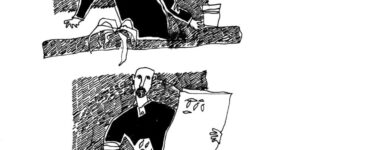We are surrounded by stories. We live in stories, ours as well as others. However, some stories go unnoticed because either we don’t notice them or we don’t want to notice them. When such stories shake us to open our eyes, we wake up with a jolt. Such are the stories narrated by Katti Padma in her Cheekati Puvvu. The flower of darkness or the flower in darkness or the darkness called flower or flower which is darkness– there are nineteen stories in this volume. They bring alive dreams, tears and new worlds, as the author titles her foreword to the book. These stories depict the contested and complicated lives of strong, bold, resilient women in their language of the soil. They learn in a difficult way that life is nothing but a struggle and a lone struggle in that. Let the entire world turn against them, these women don’t recede. They have to fight back if they have to survive. Some of them silently wait for the time to change their predicament while some others quickly confront the oppressive circumstances to move out of there, The author says in her foreword that every woman who approaches their organisation turns into a new experience for her. Similarly, every woman we meet in her stories becomes a new experience for the reader. As she says, all the characters in these stories are alive. She rightly proclaims that she wrote the stories of only those valiant people who do not hesitate to reject a person, a marriage, a son, a moral if they do not like.
The women in these stories are in perfect harmony with nature and other living beings. They do not hesitate to establish a bond with snakes and pray for their safety, not because they deify the snake but because they understand the value of life and the precarity in the life of a snake like Nukalamma in the story “Ma Isapatnam Konda”. Similar is the protagonist’s concern for a pig’s suffering in “Mantrasani”. She notices that a cow stands by a pig in labour to console and comfort the pig. The boundary between the human and the animal world gets blurred when the protagonist and the cow join in their anxiety for the pig’s safety.
Short women, tall women, fair women, dark women, fat women, lean women– their features are always compared with others and judged. The systemic violence against women in many forms and many spaces. Women are in constant war with the forces around them, some individuals and some systems, to articulate and assert themselves. They are meted out with heart-wrenching cruelty that is typical of a patriarchal and feudal society. Some women rebel against the oppressive marriage but land in toxic relationships; some others try to take the help of the official mechanisms but learn that they are equally hegemonic and misogynistic. Then, they start looking towards themselves for support, strength and survival. Those who cannot protest, succumb to aggression in personal, familial and systemic relationships. Adilakshmi in “Manaki Pellillu Achiravu” says to her granddaughter, “why can’t you all educated women come together and kill this marriage instead of crying to death like this?”
A caring, providing and love-making husband, in “Vidudala”, is hailed by the entire society as a responsible and loyal husband. But, what does the wife think of that suffocating and violent care that husband showers on her? Not only her husband but also his woman boss and the police fail to understand her pain and her struggle to get out of the marital sexual violence. When she tries to take the help of her empathetic son to release herself from the clutches of her husband, she is blamed for escaping from the responsibility to take care of husband in his old age. Another woman, in Manasudiki Pote”, pampered by her family and married to an older man at a very young age follows her desire in search of pleasure and falls prey to a toxic man who distances her from her family and completely colonises her life, violently. The woman loses all her people but retains her inner strength which finally revolts against him and pushes him out of her house and life.
There are mirrors in these stories, and these stories turn into mirrors for the readers to find the reflection of the self and the other. One encounters the battles that the women in these stories as the well as the battles that we have been and not have been fighting in our lives. The toiling, independent, self-reliant, working class women shatter the facade of hegemonies manipulating in the guise of values with their articulations, questions, thoughts, re-formulations and disapprovals.
*









Add comment